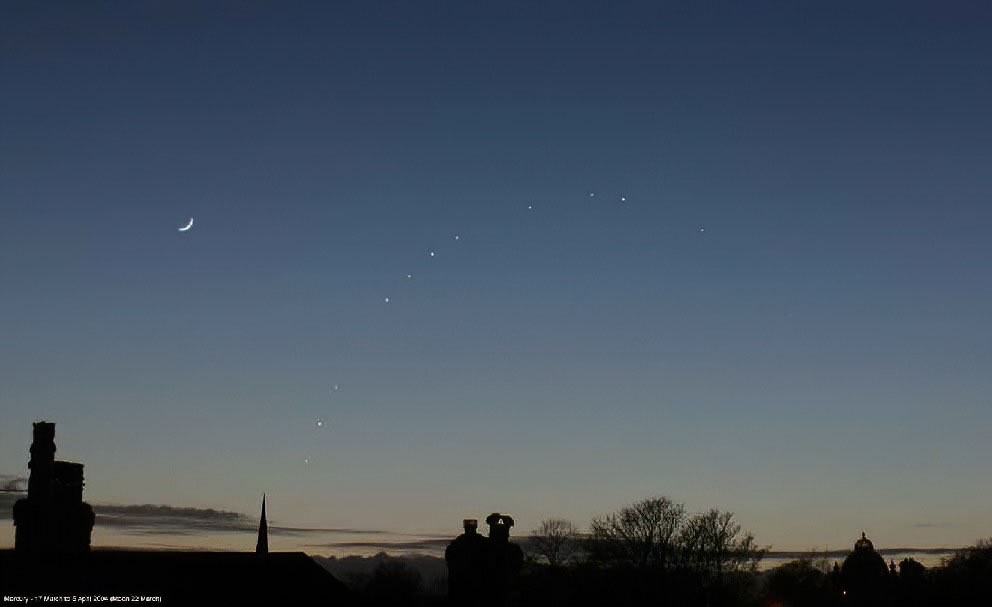Information...
Mercury is the smallest and closest planet to the Sun, with an orbital period of 87.97 days. It's named after the Greek god Hermes, which translates into Latin as Mercurius (Mercury) and in many languages is the source for the name of the day of the week 'Wednesday' (eg. mercredi in French).
Mercury's orbit around the Sun is highly elliptical, so that it's distance ranges from 46 - 70 million km from the Sun (29-43 million miles). It's relative closeness to the Sun, from the perspective of Earth means that is never more than 28° away from the Sun and is only visible shortly before or after sunset, when it appears as a bright star-like object. Because of it's proximity to the Sun, however, caution should always be used when trying to view or photograph it!
Tony Cook's montage image above was taken between March 17th and April 6th 2004, with the Moon superimposed from March 22nd.
The rotation of Mercury with respect to the Sun is unusual as it is 'tidally locked', only spinning on it's axis three times for every two orbits around the Sun. An observer on Mercury would therefore experience a single day every two Mercurian years! (176 Earth days)
Mercury is small! It has a radius of about 2,500km which is slightly larger than our Moon and smaller than Saturn's moon Titan & Jupiter's moon Ganymeade. The planet is dominated by an iron core which makes up about 70% of its mass and occupies 72% of it's radius. Mercury's low mass and it's close proximity to the Sun also mean that it has no real atmospehere, a very weak magnetic field, and a surface that is covered in craters.
The planets proximity to the Sun, has also helped support Einstein's theory of General Relativity. Because it's orbit is highly elliptical, Mercury passes through regions of different space-time curvature, causing the position at its perihelion (closest approach) to shift slightly between orbits. Prior to Einstein's calculations, the orbit of Mercury could not be explained accurately by Newton's laws. The effect is however quite small, as of the planets precession of 5,600 arcseconds per century, only 43 arcseconds is due to space-time distortion from the mass of the Sun.
For more info. see the Wikipedia entry.
